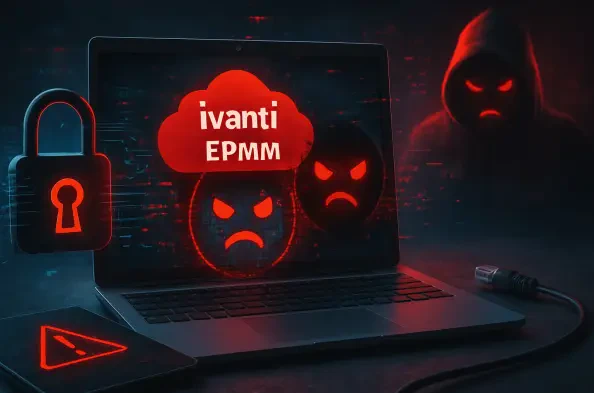In a chilling reminder of the ever-evolving landscape of cyber threats, a recent wave of attacks targeting Ivanti Endpoint Manager Mobile (EPMM) has exposed critical vulnerabilities that hackers have skillfully exploited to gain unauthorized access to sensitive systems. Disclosed earlier this year, two significant flaws, identified as CVE-2025-4427 with a CVSS score of 5.3 and CVE-2025-4428 with a CVSS score of 7.2, have become prime targets for malicious actors. These vulnerabilities, involving an authentication bypass and a remote code execution (RCE) issue within open-source libraries of EPMM, were quickly weaponized by sophisticated threat groups. Notably, a China-linked entity tracked as UNC5221 capitalized on these weaknesses shortly after their public disclosure, chaining them to execute devastating attacks. This alarming development, detailed in a comprehensive report by the Cybersecurity and Infrastructure Security Agency (CISA), underscores the urgent need for organizations to strengthen their defenses against such rapidly exploited software flaws.
Unpacking the Technical Exploitation Tactics
Delving into the mechanics of these cyberattacks reveals a calculated approach by hackers to maximize damage through the Ivanti EPMM vulnerabilities. CISA’s analysis highlights how attackers accessed EPMM servers by exploiting the authentication bypass and RCE flaws in tandem, enabling unauthenticated remote command execution. Once inside, they deployed two distinct sets of malware, comprising five malicious files, to maintain persistence and evade detection. These files were strategically placed in temporary directories, allowing threat actors to execute arbitrary code, gather system data, list root directories, and extract LDAP credentials. The malware operated in segments to bypass signature-based detection, with components like malicious listeners embedded into Apache Tomcat to intercept HTTP requests and dynamically build new malicious code. This level of sophistication illustrates not only the technical prowess of the attackers but also the critical gaps in unpatched systems that facilitate such deep intrusions into enterprise environments.
Strategies for Mitigation and Future Defense
Reflecting on the severity of these intrusions, it became evident that immediate and robust response measures were essential to curb the damage inflicted by these exploits. CISA’s recommendations focused on the urgency of updating to patched versions of Ivanti EPMM, specifically versions 11.12.0.5, 12.3.0.2, 12.4.0.2, 12.5.0.1, and later, to close the exploited vulnerabilities. Beyond patching, enhanced monitoring and restrictions on mobile device management (MDM) systems were advised to prevent similar attacks. The incident also shed light on a broader trend of vulnerability chaining by state-sponsored actors like UNC5221, who exploit publicly available proof-of-concept code to amplify their impact. Moving forward, organizations must prioritize proactive cybersecurity practices, including regular updates, network reconnaissance monitoring, and adherence to best practices. By learning from these past breaches, businesses can better prepare for future threats, ensuring that rapid response and fortified defenses become the norm in safeguarding critical infrastructure against evolving cyber risks.






